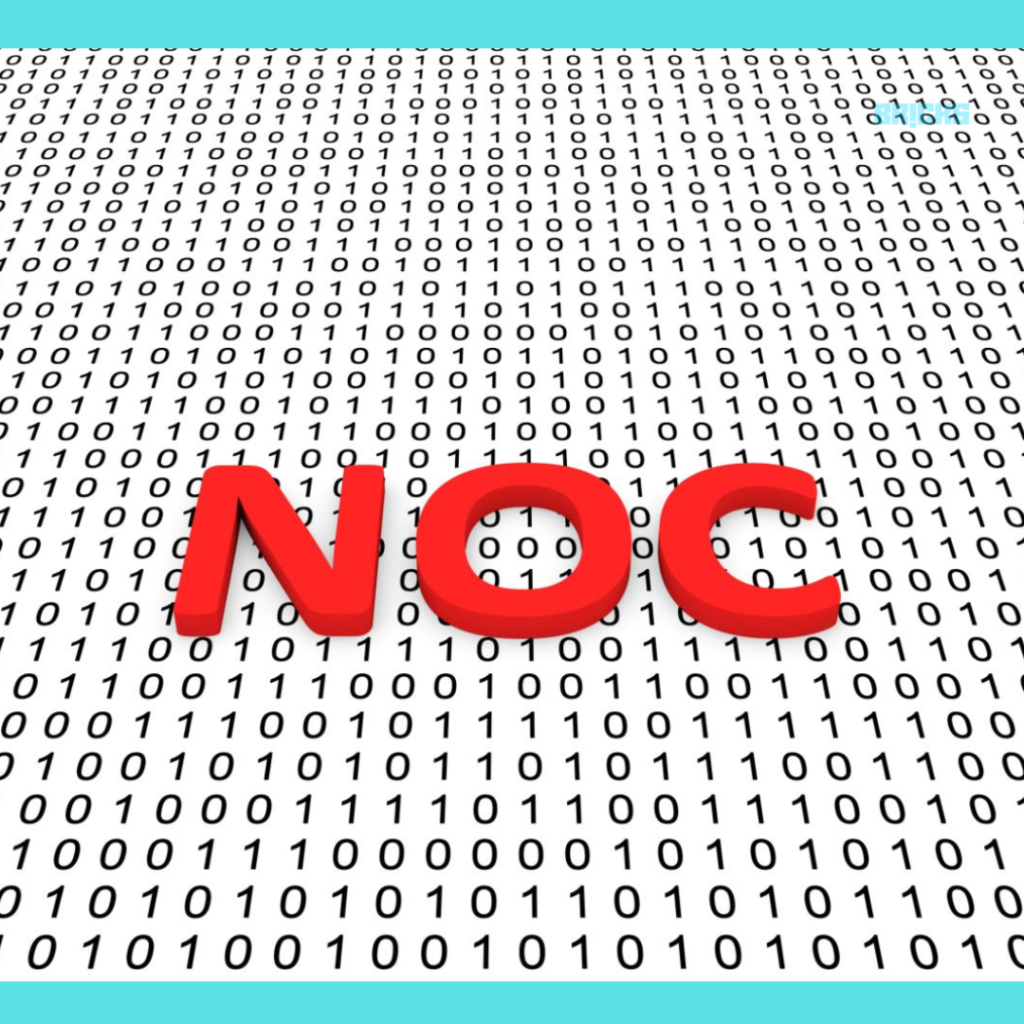A No Objection Certificate, or NOC for short, is an important document proving a particular transaction’s validity. To finalize property transfers, a no-objection certificate is typically required. Let’s see in details about No Objection Certificate or NOC for Property Transfer: Details, Purpose and Steps to Obtain
What is a NOC, or No Objection Certificate?
No-objection certificates, or NOCs, are formal documents that may be required to complete several duties. The importance of NOCs, or no objection certificates, in real estate transactions for property transfers must be balanced. Purchasers could require specific NOCs to complete their transactions, and sellers might require them to sell their real estate. This is why everyone who deals with the sale or purchase of real estate needs to be well-versed in the No Objection Certificate for property transfer. A NOC, which attests that there are no objections to the information in the document, may be issued by any individual, institution, authority, or group.
NOC from Beneficiaries for Transfer of Property in India
After the property owner’s death, legal heirs or beneficiaries must know how to become the new property owners. If there is a will, the process is straightforward. If the property was inherited rather than gained on one’s own, legal heirs may also challenge the will. However, the succession law takes effect in the absence of a will. A NOC from additional legal heirs and an affidavit are required to transfer property. If an heir or claimant receives payment or something in kind in exchange for their share, it must be disclosed in the transfer documents. To transfer shares, the release deed must also be registered.
Thanks to the Hindu Succession Act of 1956, women can now equally claim their share of the property unless the father has prepared a will specifying how the property will be divided. According to a recent change, women who were born before 2005 are entitled to the property. Even now, women often forget to ask for a portion of their father’s wealth. A NOC is required if her portion of the assets needs to be distributed to a family member under these circumstances. To transfer property, a NOC for property transfer must be signed. The other approach requires you to execute a relinquishment deed.
Therefore, if a legal heir wants to give up their claim to a piece of property, they must give an NOC certificate favoring the other legal heirs and state it in the paperwork. This person’s children may not claim the property above in the future.
NOC for Property Transfer
A no-objection certificate for the property transfer is a document issued by banks, people, or governmental agencies containing specific property information. An NOC assures that the NOC supplier won’t encounter any legal issues should the deal proceed in real estate endeavors. No Objection Certificate or NOC for Property Transfer: Details, Purpose and Steps to Obtain are here.
Because obtaining an NOC allows the government to regulate the growth of unofficial colonies, it is now an essential stage in land registration and property transfer procedures. Land transfers and colony development require NOCs from the relevant department.
Section 21 of the Registration Act of 1908 requires an NOC from the appropriate authority before transferring any land or immovable property. To transfer land or property, an application for an NOC for land must be submitted to the appropriate Circle Office, together with the required documentation and costs. The deputy commissioner will give the NOC certificate. Upon receipt of the NOC, the applicant may proceed with property registration and mutation.
Step-wise Process for Obtaining NOC for Property Transfer

No Objection Certificate or NOC for Property Transfer: Details, Purpose and Steps to Obtain. The following outlines the steps necessary to obtain a NOC for property transfer:
1. Drafting a no-objection certificate for property transfer
Create a word document with the NOC draft.
2. Stamp Paper
To get non-judicial e-stamp documents, applicants must pay Rs 100 to the nearest cooperative bank, court, or sub-registrar office. They must provide the following details to do this:
- The applicant’s name
- Description of the document (Affidavit)
- Name of the first party (applicant)
- Name of the second party: NA
- Purchased by: (name of applicant)
- The cost of the e-stamp paper is Rs 100, plus additional vendor processing fees of Rs 10, for a total of Rs 110.
- The applicant’s phone number
- Printing
- After the document is finished, print it on paper and add a non-judicial e-stamp.
3. Printing
To complete the process, printing the draft on paper using a non-judicial e-stamp is necessary.
4. Notary
Bring all required documentation to the notary public, such as the printed NOC and identity documents, such as the Aadhaar card and passport. A notary public must sign the NOC certificate before it can be sealed and placed in the notary book once it is approved. You will pay approximately Rs. 50 for the notary.
Documents for NOC for Property Transfer
The following paperwork is required when getting an NOC, or no objection certificate, for the transfer of property:
- The photos and identity confirmation of the property seller and buyer
- Declaration of regard for the flat area and the flat value of the land allocation
- Most recent financial statement.
- Citizenship, as verified by a voter ID card or passport
- Land patta
- Buyer and seller’s affidavit or the power of attorney holder’s
- A power of attorney copy (if the seller is the attorney holder).
- Pattadar must present the affidavit supporting the POA holder.
- Co-partner NOC in a flat situation
- The Card PAN/TAN
- For apartments, the occupancy certificate and GMDA/GMMC/Municipality/Town Committee receipt.
Need for a NOC (No Objection Certificate)
Getting a NOC (No Objection Certificate) from your bank or lending organization is crucial while paying off your house loan. Not only can NOCs be used as evidence in court and have legal value, but they can also make gathering all the legal documentation about your property easier. NOCs can assist in removing a property lien. This is significant because a lien placed on real estate verifies that banks or other lending organizations are legally entitled to control it and sell it as long as the outstanding obligations are paid off.
What Does a NOC for Property Transfer Contain?
A No Objection Certificate for the transfer of property may be issued by any party for commercial, trade, or other purposes.
- It includes relevant information about the people involved.
- It is directed at the appropriate person.
- By the Registration Act of 1908, Section 21, it is legally registrable.
Key Points to Remember While Applying for NOC for Property Transfer
The widely accepted NOC format specifies the number of elements that must be covered in the letter. People must remember that a NOC must be printed on the official letterhead of the company issuing it. Understanding the fundamental elements of a NOC is essential, but learning how to write one effectively is also necessary. When drafting a NOC, keep the following points in mind:
- Keep your letter brief and to the point.
- Write in simple terms, and stay away from complicated words.
- Ensure you have all the information you need about a NOC format on file.
- There should be no ambiguity in the NOC.
- Always type the NOC on letterhead.
Format for a NOC for a Property Transfer
The format of NOC for Property Transfer can vary slightly in different states. An example of a ‘NOC format or No objection certificate for property transfer format‘ from legal heirs for the transfer of property is provided below:
Declaration
I am __________, an Indian resident/ NRI, am the spouse/ son/ daughter of _________, aged_________.
Currently living at _________________, do hereby solemnly acknowledge and declare the following:
- That __________, the deceased, held _____ shares in (the company’s name), registered under Folio No. _____ and Share Certificate No (s). _____ bearing the Unique Nos. __________ to _____ .
- That (shareholder’s name), who passed away on __________.
- That I am the deceased’s legitimate heir. I am the deceased’s (what relation) __________.
- I don’t want to assert any ownership rights over the aforementioned securities that the deceased owned. I hereby agree to waive any and all claims I may have regarding the aforementioned securities, both now and in the future.
- I hereby declare that I have absolutely no objections to transferring the aforementioned securities in the applicant’s name.
I’m signing this declaration to hand it to the appropriate Company officials.
I hereby attest that the information provided above is accurate to the best of my knowledge.
Signature: __________
Date: ______________
Each legal heir must sign the declaration in the NOC for the property transfer format described above and provide the necessary identification documentation. The declaration must be signed by a notary or oaths commissioner and written on non-judicial stamp paper.
Summing Up: NOC for Property Transfer
The “No Objection Certificate (NOC)” certifies your assertion that there are no objections to anything in any legal or official procedure. An affidavit and an NOC from other legal heirs are key documents to transfer property. Just as sellers may require specific NOCs to sell their property, purchasers may require them to finalize their purchases. This means that everyone involved in buying or selling real estate must be fully aware of this important contract.
Also Read: Try Out These 20+ Front Garden Ideas To Beautify Your Garden Space
Similar Topics: Key Things to Remember Before Taking a Loan Against Property










